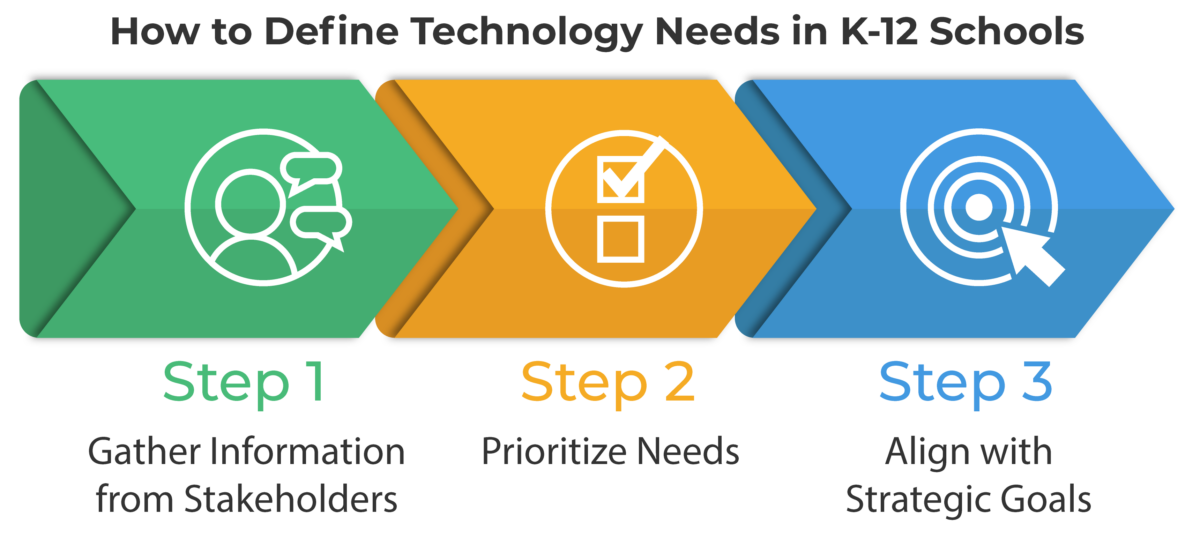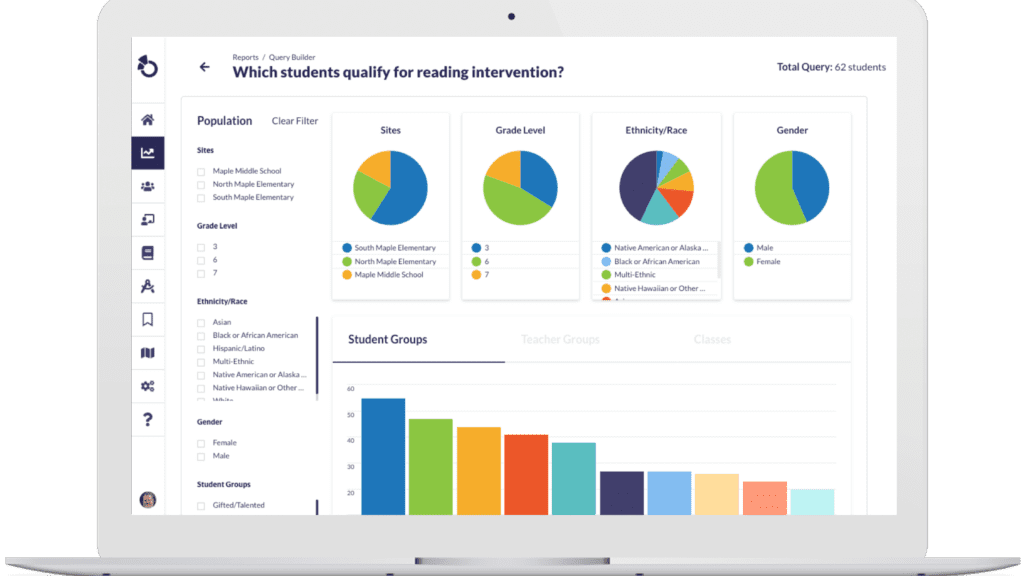How District Leaders Can Choose the Right EdTech Tools
By: David Specht
In K-12 education, technology isn’t just about adding new resources—it’s about empowering educators and students to achieve more. The right tools can spark innovation, strengthen engagement, and deliver meaningful progress. But with so many options available, how can school and district leaders make confident choices?
Here’s your roadmap to finding the perfect edtech tools to meet your school’s unique needs, enhance your classrooms, and amplify student success.
Why is Technology Essential in Education?
When used thoughtfully, technology is a powerful partner in education. It brings lessons to life, empowers teachers to be more efficient, and helps students develop critical skills for the future. Far from replacing the human element, technology complements educators, amplifying their impact and allowing them to focus on what they do best.
From fostering stronger teacher-student relationships to enabling personalized learning and data-driven thinking, technology in K-12 education is a catalyst for deeper learning, stronger engagement, and smart decision-making. It also enhances how schools operate—streamlining workflows, boosting collaboration, and aligning efforts around shared goals and initiatives.

Define Your Needs With a Technology Assessment
Before diving into the vast marketplace of edtech solutions, start by start by conducting a technology needs assessment. This process ensures you focus on what truly matters and provides a roadmap for selecting tools that align with your goals. Key steps include:
- Gather Information Across Stakeholders: Include input from all potential users—teachers, students, administrators, and families—to identify current gaps and future opportunities.
- Prioritize Needs: Distinguish between "must-haves" and "nice-to-haves" by evaluating which tools will most effectively address critical challenges, such as improving student outcomes or streamlining workflows.
- Align with Strategic Goals: Review your district’s broader vision and technology plan to ensure every tool supports your instructional and operational objectives.
When done thoughtfully, a needs assessment highlights opportunities for technology to not only fill gaps but also amplify what’s already working well in your classrooms and schools.
Explore Different Categories of Edtech Tools
Not all edtech tools are created equal. To build a robust ecosystem of technology, consider these key categories:
Instructional Tools
These tools enhance how educators deliver lessons and engage students in meaningful ways:
- Adaptive learning platforms: Personalize instruction by adjusting content and pacing to meet individual student needs.
- Learning management systems (LMS): Streamline assessment delivery, organize course materials, and track student progress in one central hub.
- Project-based learning resources: Support collaborative, real-world problem-solving that deepens student understanding.
Assessment Tools
Assessment tools help educators measure learning and guide instruction effectively:
- Formative and summative assessment platforms: Facilitate ongoing evaluations and end-of-unit exams to measure student achievement.
- Customizable rubrics and standards-based grading tools: Enable fair, transparent evaluations aligned with learning objectives and standards.
Otus makes it easy for educators to create, administer, and analyze assessments—all in one place. From AI-generated questions to interactive, standards-aligned assessments, Otus provides tools that save time and deliver actionable insights. Learn more about Otus Assessments.
Administrative tools ensure schools run smoothly and efficiently by organizing data and improving communication:
- Student data management systems: Centralize academic, behavioral, and attendance data, including third-party data, to inform decisions.
- Communication platforms for families and staff: Foster stronger connections through streamlined messaging and notifications.
- Attendance and behavior-tracking solutions: Monitor key trends to support interventions and improve student outcomes.
Otus provides a centralized hub for all student data, simplifying the process of tracking trends, analyzing subgroup performance, and identifying students needing support. With real-time insights, educators and administrators can make data-driven decisions that improve outcomes and ensure equity districtwide. Learn more about data with Otus.

Key Factors to Consider When Choosing Edtech Tools
1. Total Cost and Return on Investment (ROI)
Budget constraints are a reality, but the cheapest option isn’t always the best. When evaluating edtech tools, consider the total cost of ownership, including:
- Implementation and staff training
- Licensing and subscription fees
- Ongoing support
Now, think beyond the price tag: how many solutions does your school currently use? One-off solutions may seem affordable at first, but their costs—both financial and logistical—add up quickly. Multiple tools often require separate licenses, unique logins, and siloed data, leading to inefficiencies and higher expenses over time.
In contrast, a single, unified platform consolidates these functions into one streamlined solution. Not only does this reduce costs, but it also saves valuable time for educators and administrators. A unified approach means fewer logins, better data integration, and a smoother user experience—all of which contribute to greater efficiency and stronger ROI.
Finally, evaluate the ROI. Will the tool save time for teachers? Improve student outcomes? Reduce administrative burdens? A tool that pays dividends in efficiency and success is worth every penny.
2. Data Privacy and Security
Student data is precious. Make sure any edtech solution complies with data and privacy laws like FERPA and COPPA. Trusted third-party validations—such as the 1EdTech Data Privacy Seal or the Common Sense Privacy Rating—can give you confidence that a tool prioritizes security. Certifications like these simplify the decision-making process, ensuring student data remains protected.
3. Interoperability
Edtech tools work best when they work together. Interoperability ensures data can flow seamlessly between systems like your LMS, SIS, and assessment platforms, eliminating manual data entry and saving valuable time. Look for tools that have earned trusted certifications such as:
By prioritizing interoperable tools, your school can streamline workflows and give educators access to the data they need—all in one place.
4. Evidence-Based Design
How can you be sure a tool delivers real value? Evidence-based tools demonstrate their impact through research and proven results. Certifications like the ISTE Seal or Digital Promise Research-Based Design Badge validate that tools align with learning science and deliver positive outcomes.
Tools that have been rigorously tested and shown to improve student learning provide an added layer of assurance that they’ll meet your district’s goals effectively.
5. Usability and Accessibility
The best tools are easy to use and accessible to all learners. Tools validated for usability ensure they are intuitive for teachers, students, and families, with minimal learning curves. Likewise, accessible tools meet standards like WCAG guidelines to ensure all students—including those with disabilities—can engage with the platform effectively.
Look for solutions that demonstrate their commitment to inclusivity and user-centered design through validations like the CAST Universal Design for Learning Certification or Digital Promise Learner Variability Certification.
6. Training and Support
The best tools are only as effective as the people using them. Ensure the edtech provider offers:
- Personalized onboarding: Tailored plans to meet your school’s unique goals and initiatives.
- Ongoing professional development: Training designed to grow with your team, whether on-site or virtual, to ensure lasting success.
- On-demand resources: Easily accessible tools to troubleshoot issues or provide quick, practical learning.
Support from former educators can also make a big difference in helping staff understand how to use the tools to their full potential. There’s something reassuring about learning from people who’ve been in your shoes—they know the challenges educators face and can provide practical, relatable guidance.
By offering flexible training options and support tailored to your needs, the right provider ensures your staff feels confident and empowered every step of the way.
The Big Picture and Finding the Perfect Fit
When used thoughtfully, technology is a catalyst for deeper learning, stronger engagement, and smarter decision-making. Choosing the right edtech tools isn’t just about solving today’s challenges—it’s about building a sustainable foundation for the future. By prioritizing alignment with your district’s goals, robust integration, and meaningful support, you’ll equip your team with tools that truly make a difference.
Related Resources
Request a demo!
See exactly how Otus can help your school accelerate student growth and improve student outcomes – all while saving educators time.





